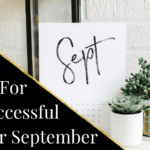The foundation to my success in sobriety and living a purpose-full, happy, healthy life is this: Meditation. That’s it. It’s the core, the beginning, the little seedling from which all things grew. Take it away and the rest crumbles.
The one thing I recommend to anyone thinking about sobriety, personal growth, and/or change, is to start to cultivate a daily meditation practice. I can’t say it enough – It is foundational to what you are building and the life you want to manifest for yourself. It is especially foundational to sobriety.
If you are looking to start somewhere and are confused about what meditation is or where to start with your own practice, this blog post will help you get going.
WHAT IS MEDITATION?
Simply put, meditation is a practice that trains the mind. One of my spiritual teachers once said “The mind is like a puppy – if you don’t train it, it shits everywhere.” Truer words may have never been spoken. Except an untrained mind is much more dangerous than an untrained puppy. An untrained mind is an untrained you.
Western research tells us that we have some 70,000 thoughts per day. In yogic philosophy, the number is somewhere closer to 1,000 thoughts per second, or something crazy like that. Whatever the number, it’s a damn lot of thoughts.
“The mind is like a puppy – if you don’t train it, it shits everywhere.”
With that much data processing, the untrained mind can only help but to hook onto some of those thoughts and run with them. This hooking in to thoughts takes us outside of ourselves, outside of our zone, and away from our focus. It takes us down rabbit holes, and tosses us into the wind like a balloon without a tether – just waiting to catch the next thought that will take us somewhere else. When we sit in meditation, we sit with this same massive downpour of thoughts coming at us, but we start to learn to unhook ourselves from them. We practice stilling ourselves, watching the thoughts as they pass by, and not giving ourselves over to them and tying ourselves to their mad journey.
That practice of unhooking – over time – strengthens our ability to unhook in the real world, in our daily lives, when we are off our meditation pillows and in the crazy non-stop world. We learn to observe from afar, and develop a discipline that allows us to consciously decide what to hook on to. We learn to create space. We learn to not react to everything. And – over time – the practice has exponential, rippling effects. A meditation practice builds our parasympathetic response, strengthens the parts of the brain that focus, relieves anxiety, develops neutrality, promotes a sense of well-being and calm, changes our genetic structure, and most importantly – changes us. And that’s the short list.
HOW TO GET STARTED ON YOUR PRACTICE.
If you’re intrigued and want to give it a whirl, here are 6 essential tips replete with Action Items to get you going.
1. Check your motivation. Like anything we do, we need to have some motivating factor to get us to start and keep us engaged. What got me started – LONG before sobriety – was a desire to get my mind to stop doing what it was doing – running the show like a freaky-deaky – without reaching for a glass of wine or a joint. That was January 2012. What engaged me to do it more was the freedom I began to experience from the hell that was my non-stop mind and seemingly unending anxiety. And what keeps me on my meditation cushion now are myriad reasons, a few of them being: One, it’s a habit, akin to brushing my teeth. Second, there is a clear difference between a Holly that meditates and a Holly that doesn’t – the latter is a crazy bitch. Third, if you practice it long enough, it can be better than any drug you’ve ever taken. Fourth, it’s a coping mechanism – I reach for it when I need it the way I used to reach for Netflix, wine, pot, a cigarette, a credit card, or a footlong from Subway.
Action item: Take a few minutes to check in with yourself. What is your motivation? Why are you reading this article? What do you want more than anything? Write a short list of the things you want to achieve in your life – big or small – and how meditation will help you achieve them. At the top of the list, write down “I choose to meditate to achieve these things” and stick it somewhere you’ll read it daily.
2. Realize ANYONE is capable of doing it. Most people think they aren’t capable of meditating. I assure you, if I can, then you can. I used to tell myself I was not cut out for it – that I was different and it wouldn’t work. That type of self-talk sets up your subconscious to work against trying it. Get your subconscious onboard to try it out by visualizing yourself doing it.
Action Item: A week before you start your practice, get your subconscious onboard by visualizing a few times throughout the day for a few seconds yourself meditating – whatever that looks like to you, with as much positive detail as possible. We are what we think we are.
“When people say to me, “I don’t have time to meditate.” I reply, “Do you have time to feel like crap?””
3. Make the time. Everyone and their grandma thinks they don’t have time to meditate. Gabby Bernstein says it best – if you have time to feel like crap, you definitely have time to meditate. It doesn’t have to be a huge undertaking or a long practice. Start with five minutes a day and if you like it, you can build from there. Like anything else in life, if we make the time for it, we make it happen.
Action Item: Pick a start date, and then pick a time that will work for you and put it in your calendar – same time, same place, every day.
4. Make it special. Rituals are important – they bring meaning and order to simple tasks, and they keep us on track. If you want to make the practice stick, make it something special and something to look forward to. This can be anything and it doesn’t have to be perfect. Maybe it’s a meditation shawl you wear or a pillow you sit on. Maybe it’s lighting a candle or rubbing some lavendar oil on you. Maybe you even create a meditation corner or an alter that you go to everyday. Whatever it is, make it a special ocasion and something you WANT to return to everyday. I use the same scarf, I burn oil, and I always have a cup of tea with me.
Action Item: Find one thing to make special about your practice. Buy a scarf or a special pillow, maybe even create a meditation corner or alter. You don’t need to start with a lot – you’ll most likely add to the ritual as it grows – but add in something that makes you look forward to it and signifies to your body “we’re here to meditate.”
5. Explore. There are many different types of meditation practices. My first entry point was at a workshop with James Baraz where I learned Vipassana meditation. As my practice grew, I found that I loved Kundalini meditations, Vipassana meditation, guided meditation, and Brain Entrainment Meditation. My favorite resources are linked here, but you can also just google meditation and search on youtube – there are endless resources. You do have to be willing to try on a few types to find what works for you – it’s a system of trial and error and meditation is not once size fits all. Once you find a few that you like, be willing to go deep. I heart Kundalini and I I LOATHE zen meditation, and I only know this by trying them both extensively over time.
Action Item: Try one of these linked meditations, or search online for one to try that appeals to you. Load it onto your iTunes or bookmark it on your computer now to have it handy. Some are expensive, some are cheap, some are free. Cost doesn’t necessarily reflect the quality of what you get.
6. Practice, not perfection. My teacher, Stephanie Snyder, once said “you don’t get good at meditation. You get good at practicing meditation.” As a Type A, I approach most every skill the same: Master it, do it better than everyone else, own it. Meditation DOES NOT work this way. You cannot be perfect at it, and likewise, you cannot fail at it. All you can do is fail to attempt it. Make sure you reward yourself just for showing up, and let go of any pressure you are adding to “do it right.”
Action Item: Commit to doing it, and being kind to yourself no matter what happens. After you finish your meditation, make a habit of saying out loud “I’m proud of you for doing this!” and mean it! It will reinforce you and your subconscious, and keep you coming back to the pillow.
Source: Hip Sobriety









